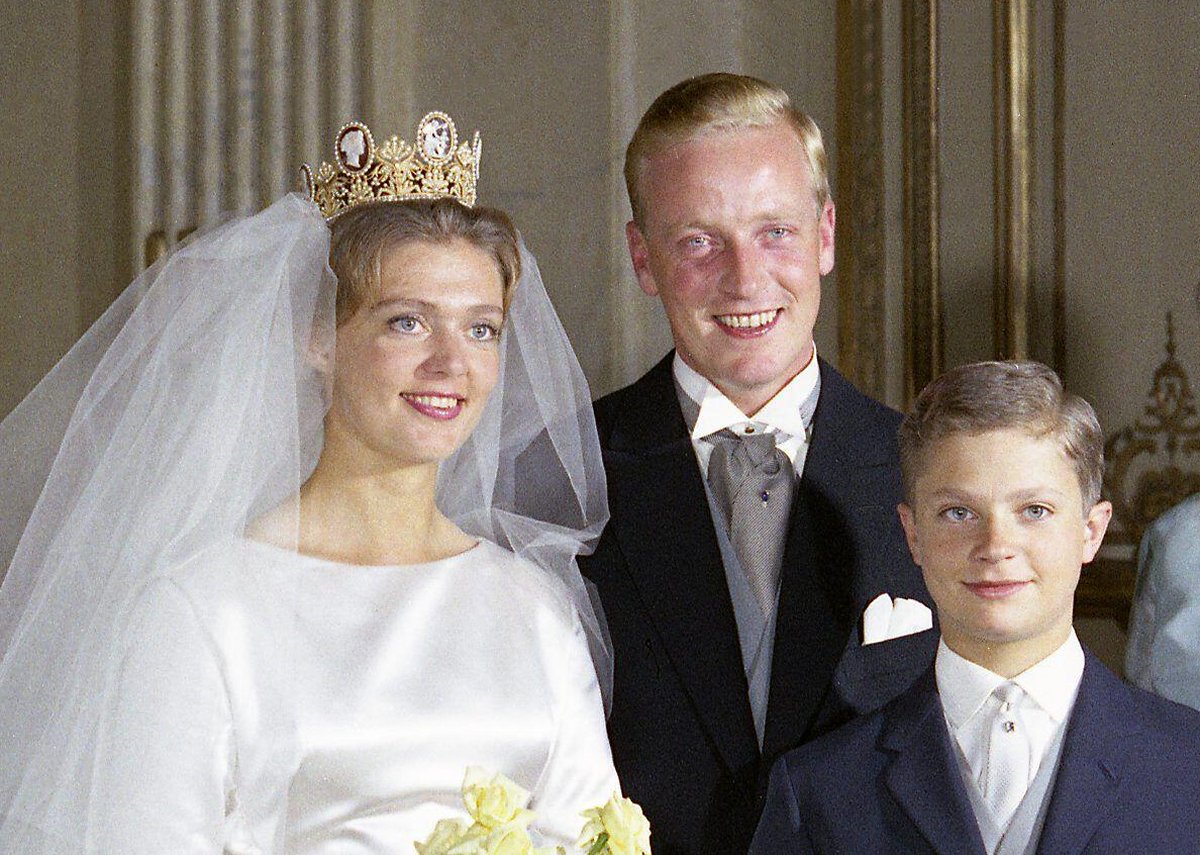
Last week, the world learned of the passing of Princess Birgitta, a sister of the King of Sweden. In her honor, I’m devoting today’s article to a look back at the trio of tiaras that she wore during her royal wedding celebrations in 1961.
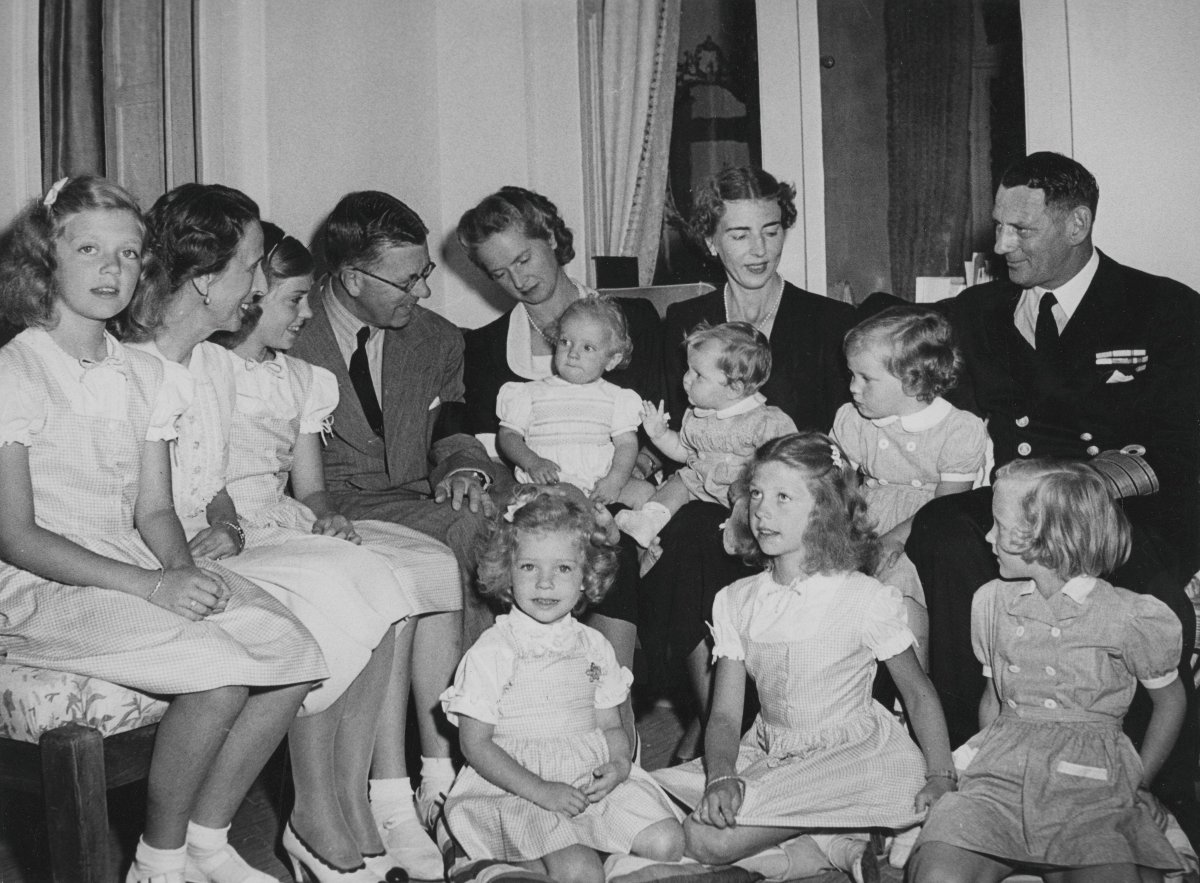
Princess Birgitta, the second child of Prince Gustaf Adolf and Princess Sibylla of Sweden, was born in January 1937 at Haga Palace in Stockholm. She was the second of the couple’s four daughters, after Princess Margaretha and before Princesses Désirée and Christina. The quartet were joined by a younger brother, the future King Carl XVI Gustaf, in 1946, but the family’s happiness was quickly cut short when Prince Gustaf Adolf died in a plane crash in 1947.
With their father gone, the rest of the extended Swedish royal family surrounded the five children with support and love. Above, they are pictured not long after his passing with their mother, Princess Sibylla; their grandparents, Crown Prince Gustaf Adolf and Crown Princess Louise; their uncle and aunt, King Frederik IX and Queen Ingrid of Denmark; and their cousins, Princesses Margrethe, Benedikte, and Anne-Marie of Denmark. Princess Birgitta is the first person on the left in the photograph, leveling a direct gaze at the photographer.
Birgitta’s grandfather became King Gustaf VI Adolf of Sweden on his father’s death in 1950, and after she finished her education, she joined her sisters in taking on royal engagements in support of their grandparents. She was a dynamic and fascinating member of the royal family who loved fencing, even winning a national championship in the sport, and fashion. But for Birgitta, an early romance cut short her career as a working member of the royal family. In the autumn of 1959, the 22-year-old princess had gone to Munich to study German, her mother’s native language. While there, she bumped into 27-year-old Prince Johann Georg of Hohenzollern at a cocktail party.
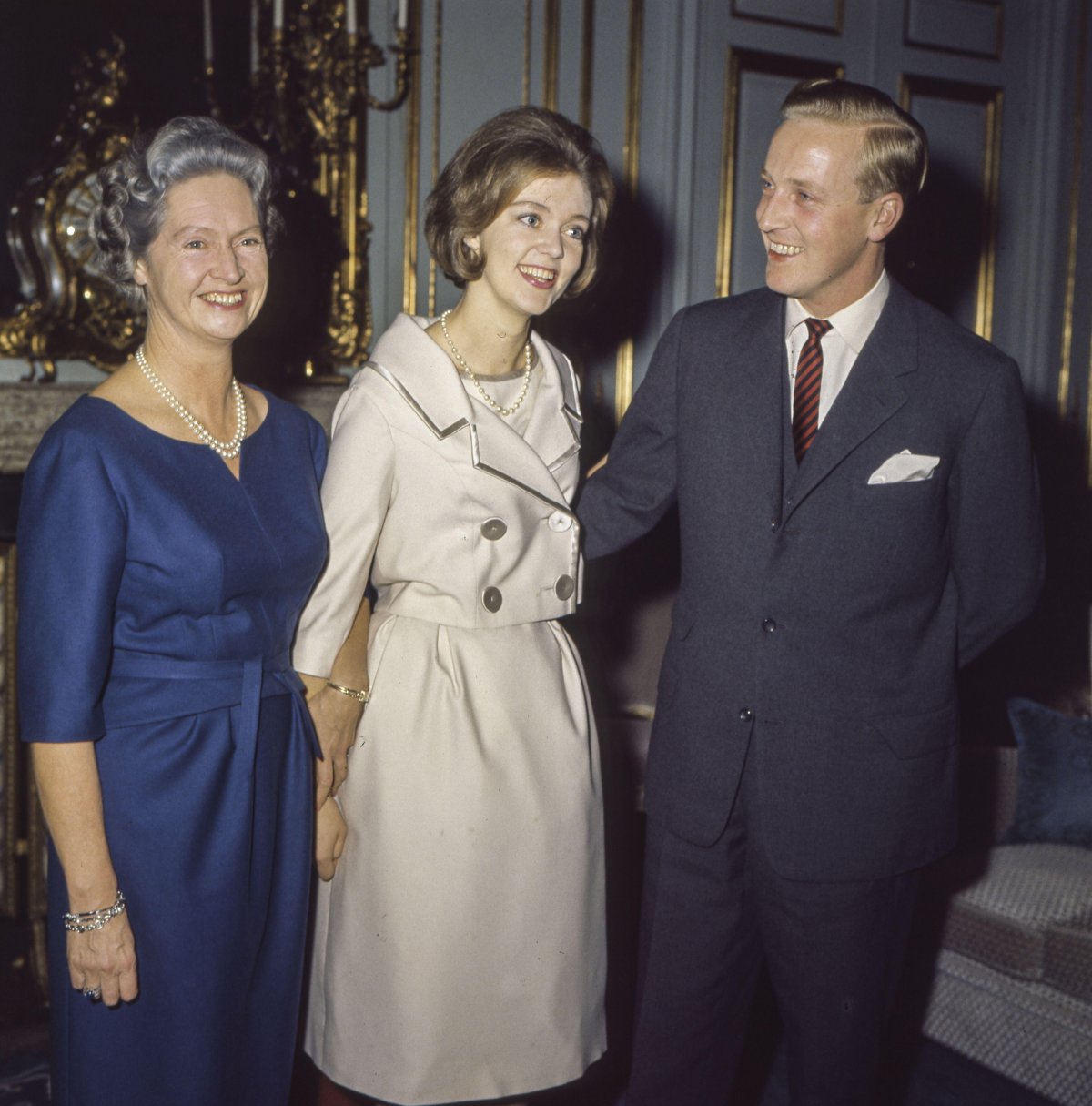
Johann Georg, known to his friends as “Hansi,” was part of an extended branch of the family that ruled Germany until the end of World War I. His father’s ancestors ruled the German principality of Hohenzollern-Sigmaringen until the middle of the nineteenth century, and his maternal grandfather was the last reigning King of Saxony. Hansi was born after his family’s titles were formally abolished in Germany, and he embarked on a career of his own after university, becoming a noted art and archaeology expert.
After that initial meeting in Munch, Birgitta and Hansi began seeing quite a lot of each other. A spokesman for Hansi’s family described their early courtship: “The two had much fun together during Munich’s carnival, but at that time nobody thought that anything serious would develop.” All of that changed when, in 1960, Hansi was invited to Sweden to participate in an elk hunt. “That was the first time he was introduced to the Swedish royal family. It was in September that the two decided to marry.”
The couple’s engagement was officially announced in Stockholm on December 15, 1960. (It was a big day for European royals, as King Baudouin and Queen Fabiola were married in Belgium on the same day.) Princess Sibylla posed for pictures with the engaged couple as they greeted the press in her apartment at the Royal Palace the following day. At the request of one journalist, Birgitta showed off her engagement ring, which was set with a diamond, a sapphire, and a ruby. Another member of the press pack asked Hansi about the couple’s shared interests. “We have many things in common—art, sports, interior decorating,” he responded. “And love?” the reporter prompted. “Yes, love,” he answered, a sentiment that Birgitta echoed.
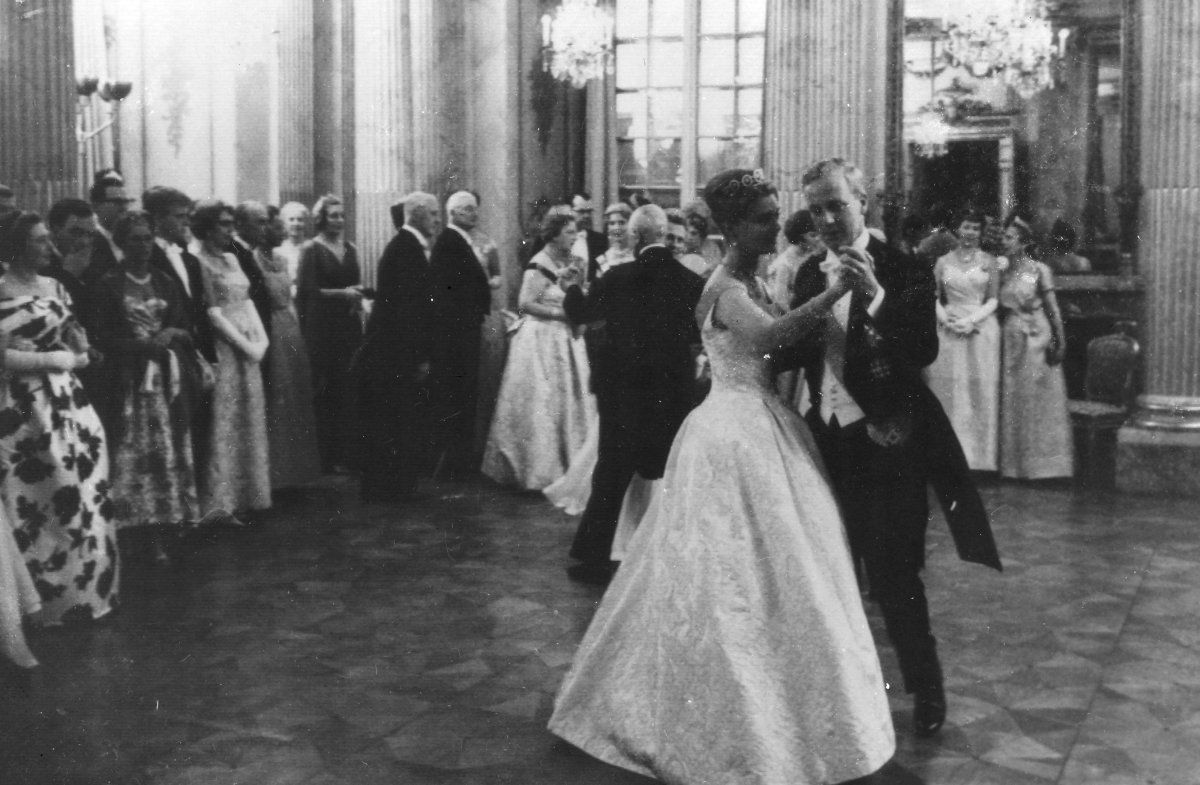
Six months later, the couple’s wedding festivities began in Stockholm with a royal ball on Wednesday, May 24, 1961. It had been a quarter of a century since the last royal wedding was held in Sweden—the marriage of Princess Ingrid of Sweden and Crown Prince Frederik of Denmark—and King Gustaf VI Adolf pulled out all the stops for his granddaughter. One newspaper exclaimed, “One of the biggest royal parties ever given at the royal palace in Stockholm will mark the eve of the wedding celebrations,” adding that the party “will begin early and end by midnight to ensure that the 250 guests, friends and relatives of the young couple, are rested for the wedding the next day.” At least one guest, however, still managed to find herself in a painful mishap during the party. The Duchess of Saxe-Coburg and Gotha, Princess Birgitta’s 75-year-old grandmother, fell on the palace stairs and fractured her arm.
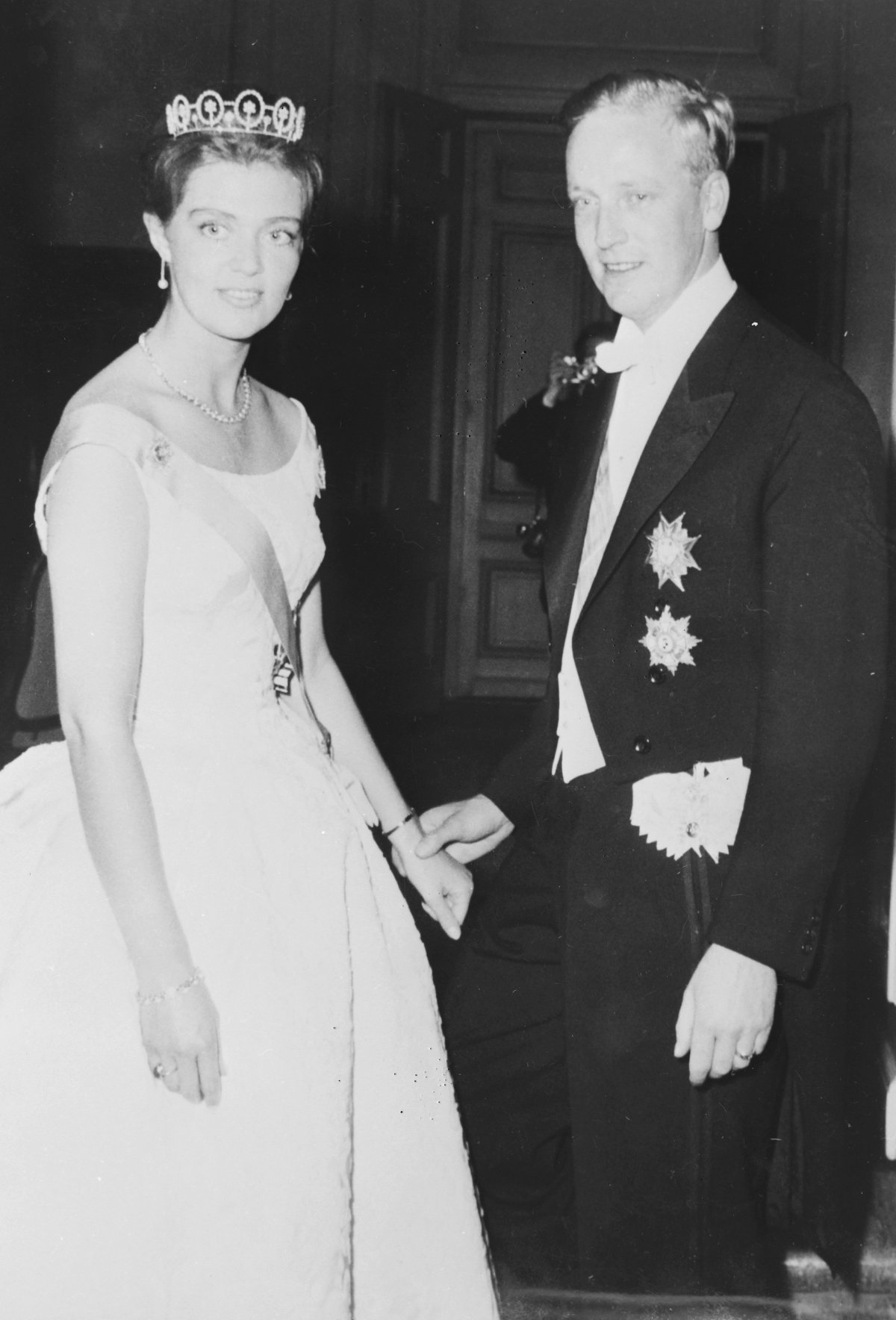
For the white-tie ball, Princess Birgitta wore an elegant ballgown with decorations and some special pieces of jewelry. Her most significant accessory was a new tiara. The jewel featured seven pearl circles, connected with horizontal pearl-set sections, with pearl and diamond flowers in their centers. Additional diamond flowers are also interspersed between the pearl circles.
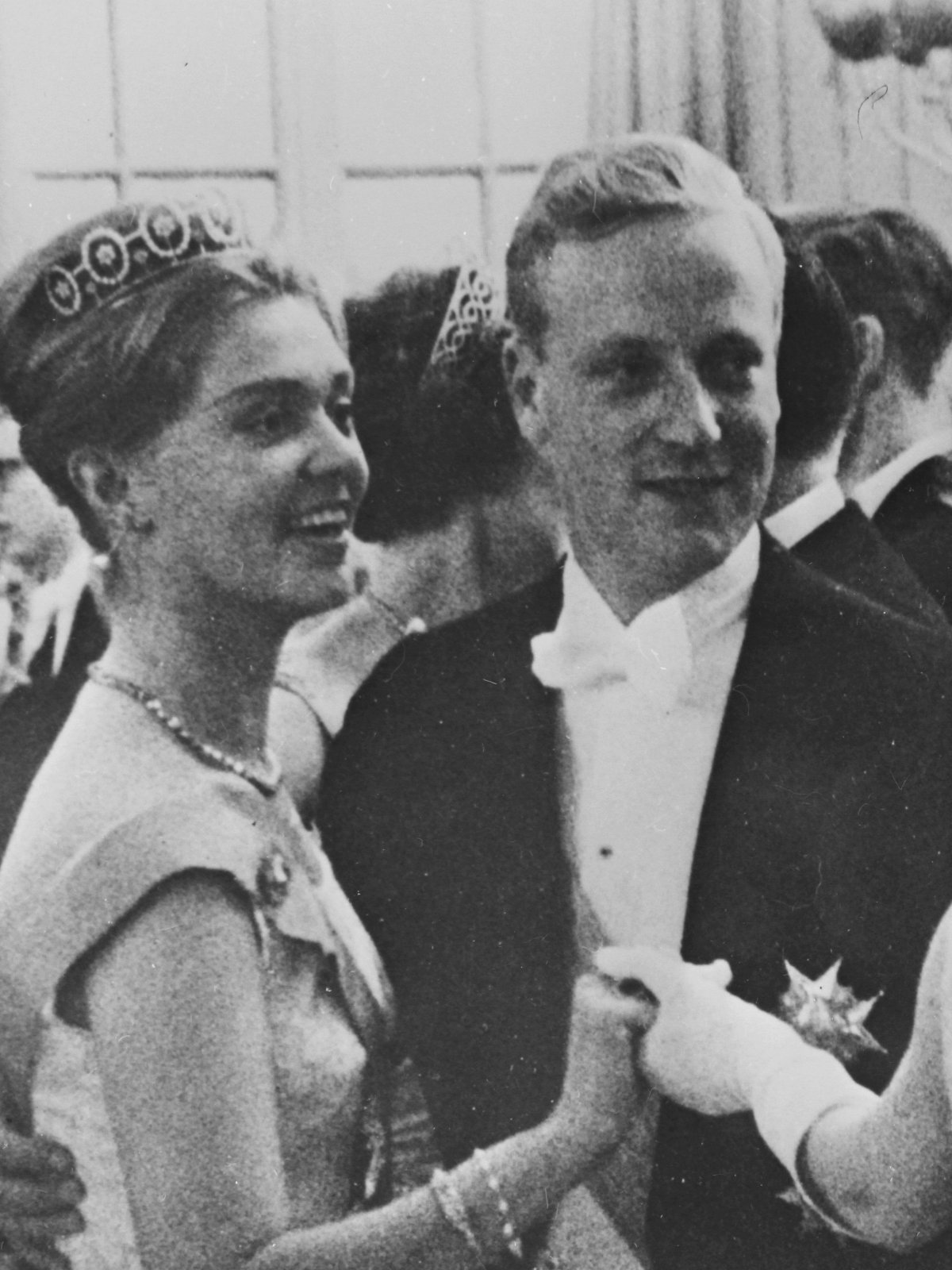
The tiara was Birgitta’s wedding present from her grandfather, King Gustaf VI Adolf. It was made by the jeweler Carlman specifically for the princess. The jewel glowed on the princess’s head as she sashayed across the dance floor at the palace with her groom-to-be. She wore additional diamond and pearl pieces, including pearl drop earrings, with the ensemble. The tiara was Birgitta’s personal property, and she took it with her to Germany after her wedding. Later, she gave it to her daughter, Princess Désirée of Hohenzollern, who has worn it at several Swedish royal family celebrations.
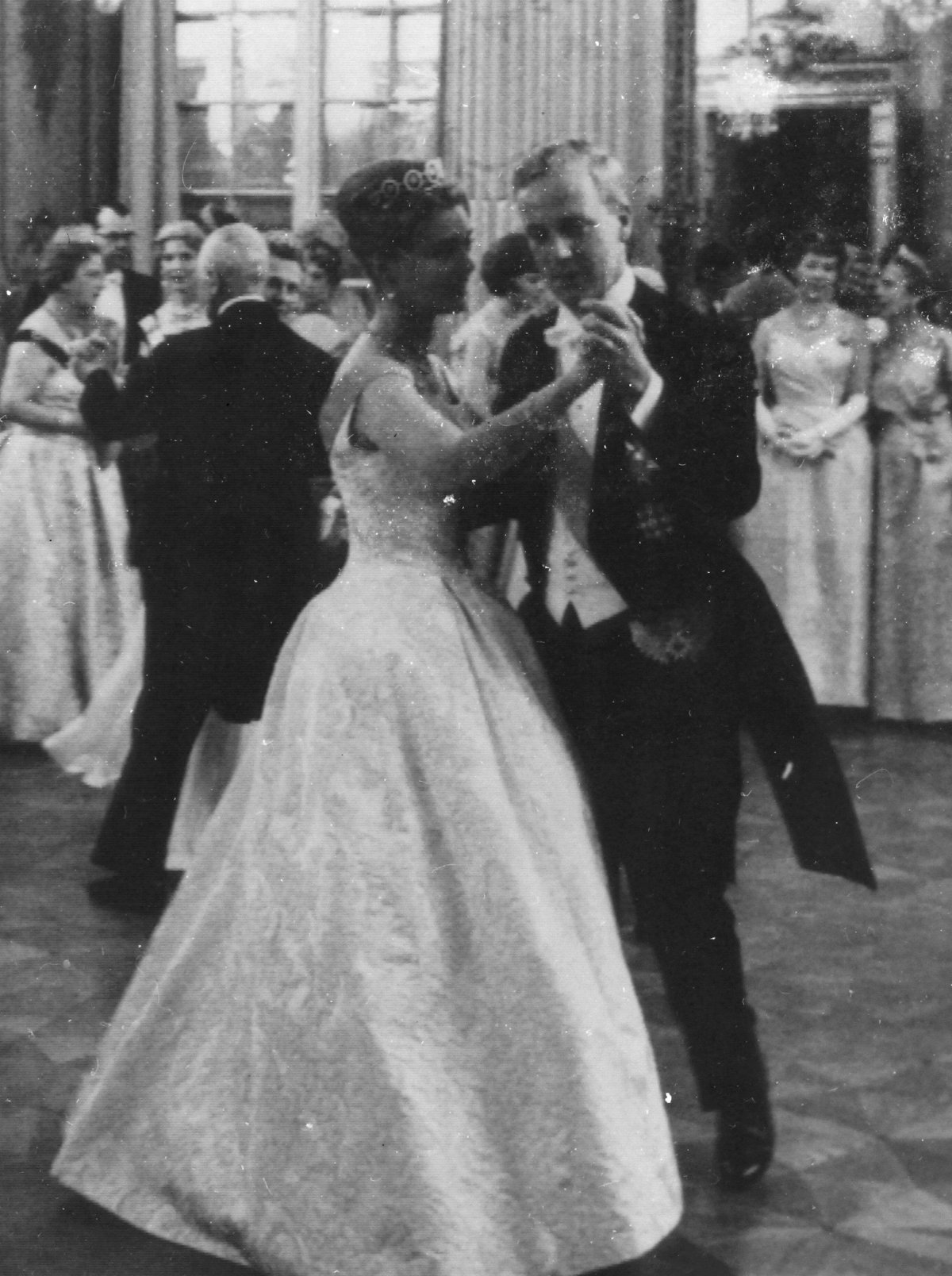
There were many royal family members and friends in attendance at the ball. You can catch a brief glimpse of some of them in the background of this photograph. Birgitta’s step-grandmother, Queen Louise of Sweden, wore the Baden Fringe Tiara for the occasion, while Birgitta’s aunt, Queen Ingrid of Denmark, was elegant in the Pearl Poiré Tiara. Birgitta’s mother, Princess Sibylla, wore her favorite jewel, the Connaught Diamond Tiara, for the ball.
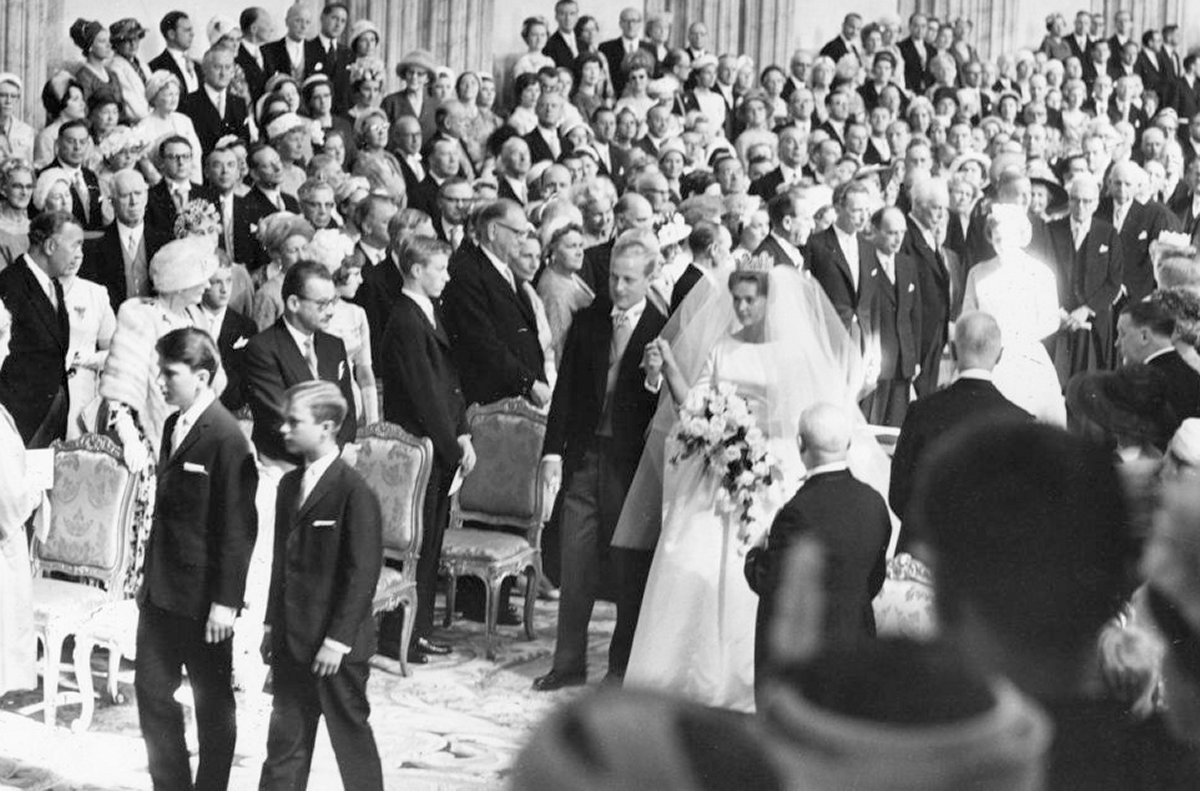
On the morning of Thursday, May 25, Birgitta and the rest of the Swedish royals gathered in the hall of state of the Royal Palace in Stockholm for the first of the couple’s two wedding ceremonies. Differences in both nationality and religion—the prince was Roman Catholic, while the princess was Lutheran—necessitated weddings in both Sweden and Germany. King Gustaf VI Adolf had wanted the Swedish ceremony to be a Lutheran service, but he was overruled by the Pope (who also rejected Birgitta’s application for conversion). Instead, a short civil ceremony was held.
Birgitta, wearing a white wedding gown with a tulle veil and the Cameo Tiara, arrived in the hall on the arm of her groom. They processed toward a marble-topped table, which was shielded by a blue velvet canopy. There, the Lord Mayor of Stockholm, Yngve Kristensson, performed the short civil ceremony. After he read out the Swedish civil marriage form, and in response, the couple joined hands and responded, “Yes.” They did not exchange rings, and the entire ceremony itself took just a few minutes. (This royal wedding moment also coincided with another royal marriage: the wedding of King Hussein and Princess Muna in Jordan.)
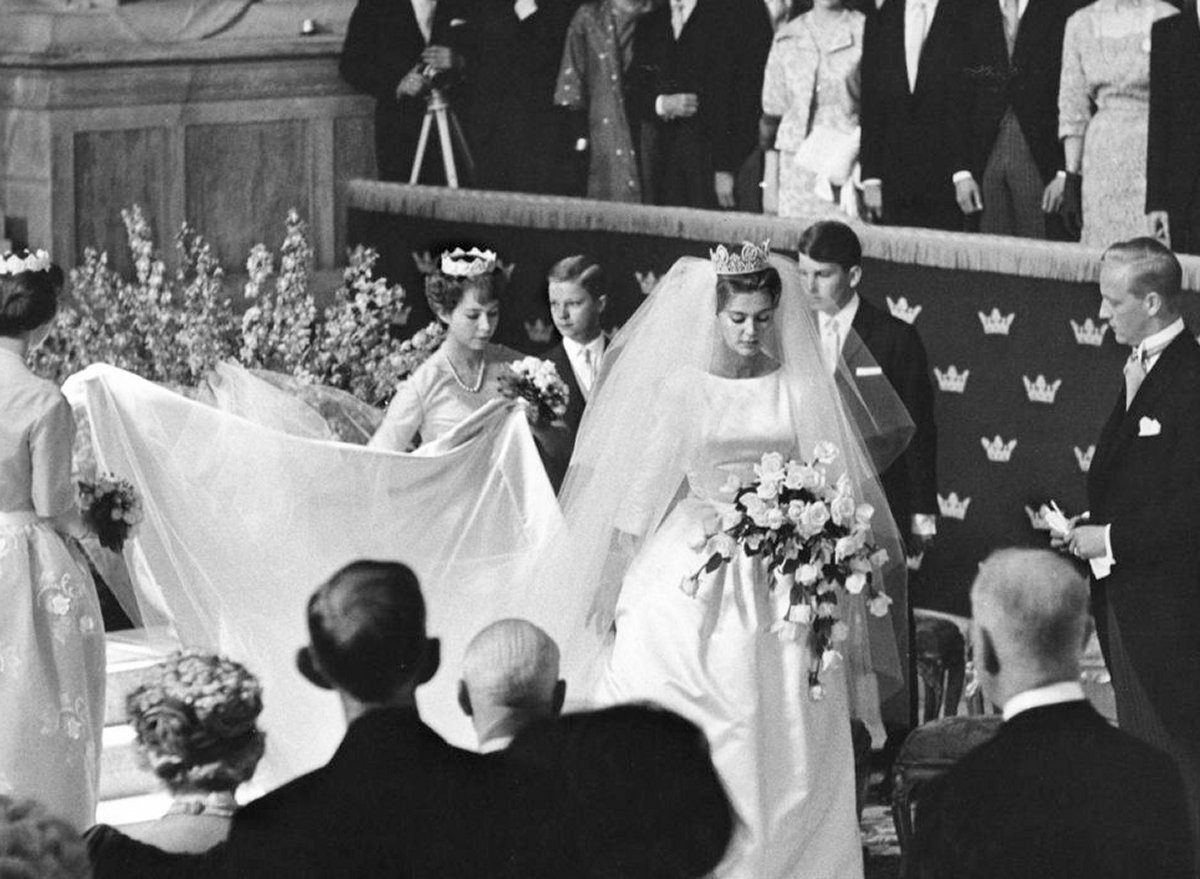
Though the civil marriage itself was done with perhaps record-breaking briefness, the service itself lasted for about half an hour. Seven hundred fifty guests, and thousands more at home watching on television, looked on as the couple signed the marriage certificate. Musical selections were also performed by the orchestra of the Swedish Royal Opera and the Stockholm Boys’ Choir. There were also beautiful surroundings to take in for the guests in the hall, which was decorated with floral arrangements in pink, red, blue, and mauve tones, plus four large urns of blue delphiniums. Birgitta’s bouquet of yellow roses, and smaller bouquets of yellow flowers for her bridesmaids, completed the floral splendor.
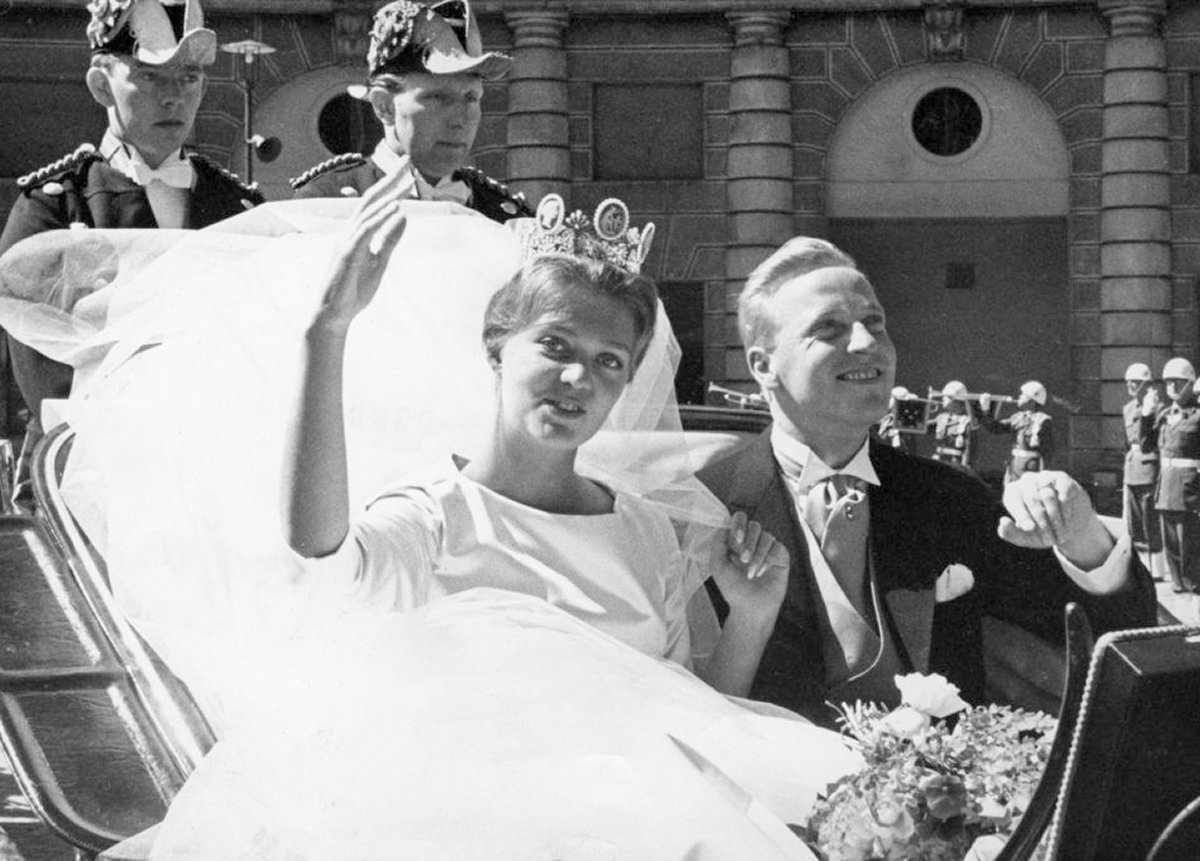
When the civil ceremony had ended, Birgitta and Hansi stepped into a horse-drawn carriage for a 15-minute procession through the streets of Stockholm. A 21-gun salute was fired from naval headquarters in the nearby harbor as the procession began. The photographs from the carriage ride provide excellent views of the special tiara that Birgitta wore for the wedding, even though she struggled with her veil a bit in the wind.
The Cameo Tiara, as it is generally known, originally belonged to Birgitta’s 5th great-grandmother, Empress Josephine of France. The tiara came to Sweden when it was inherited by Josephine’s granddaughter, Queen Josefina of Sweden. It was passed down through generations to Josefina’s grandson, Prince Eugen, who gave it to Princess Sibylla of Sweden as a wedding present in 1932.
Birgitta was the first Swedish royal bride to wear the Cameo Tiara on her wedding day. Since then, it has also been worn as a bridal diadem by Princess Désirée, Queen Silvia, and Crown Princess Victoria. It’s the perfect tiara for a bride to wear with her wedding dress, because the carved cameos mounted on the tiara depict the stories of Cupid and Venus, two Roman gods of love. The shape of the tiara also echoes that of traditional Swedish bridal crowns.
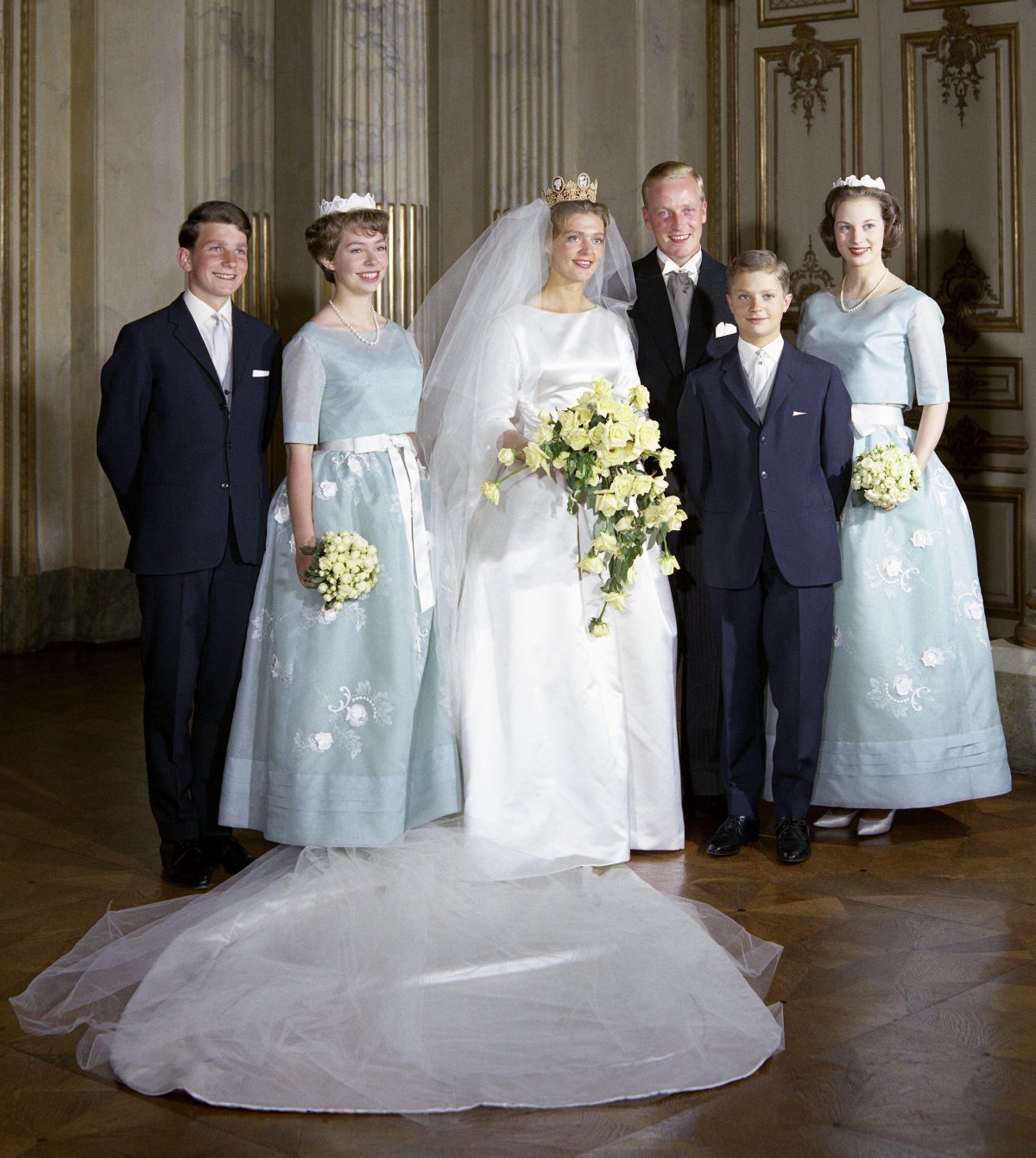
After the carriage ride, the couple returned to the Royal Palace for a luncheon, during which formal photographs were also taken. This official photograph of the wedding party after the civil ceremony offers us a color view of the ensembles worn for the wedding. Reuters described Birgitta’s wedding gown as “dress of ivory silk duchesse with a long train, half-sleeves and plain rounded neckline.” Her voluminous tulle veil matched the length of the dress’s train.
Birgitta was attended during the civil ceremony by two bridesmaids: her younger sister, Princess Christina of Sweden, and her first cousin, Princess Benedikte of Denmark. Both wore blue gowns with white embroidery, embroidered crown-like head ornaments, and pearl necklaces for the wedding. The page boys for the wedding were Birgitta’s brother, Prince Carl Gustaf, and a cousin, Count Michael Bernadotte af Wisborg (the son of her uncle, Prince Sigvard).
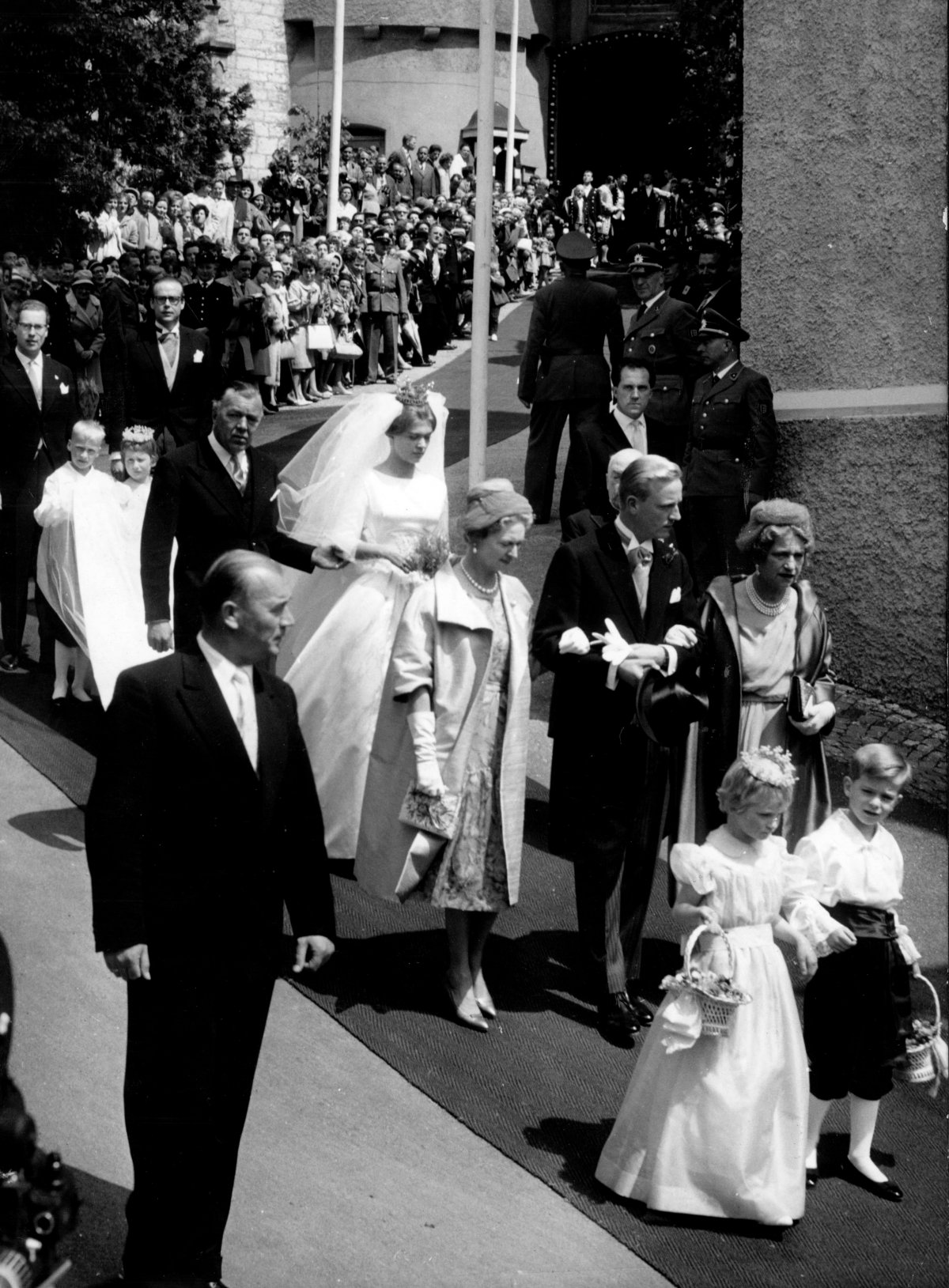
After the wedding festivities had concluded, Hansi boarded a flight from Stockholm back to Germany, where he joined in preparations for the couple’s second wedding ceremony, a Roman Catholic service at the Church of St. John in Sigmaringen. His parents, Friedrich and Margarete Karola, still lived in Sigmaringen Castle, the schloss that the family had occupied since the nineteenth century. Princess Birgitta followed on Sunday. On Monday, May 29, another grand ball was held in the couple’s honor at the castle in Sigmaringen, and on Tuesday, May 30, the Swedish royal family joined Hansi’s Hohenzollern relatives for the second wedding.
Cheering crowds numbering more than a thousand lined the 90-yard lane linking the castle and the church. At eleven o’clock in the morning, 130 guests began making the walk to the church. Hansi, dressed in a morning suit, walked with his mother, Princess Margarete Karola, on one arm and his mother-in-law, Princess Sibylla, on the other. Behind them, Princess Birgitta followed on the arm of her uncle, Prince Bertil of Sweden.
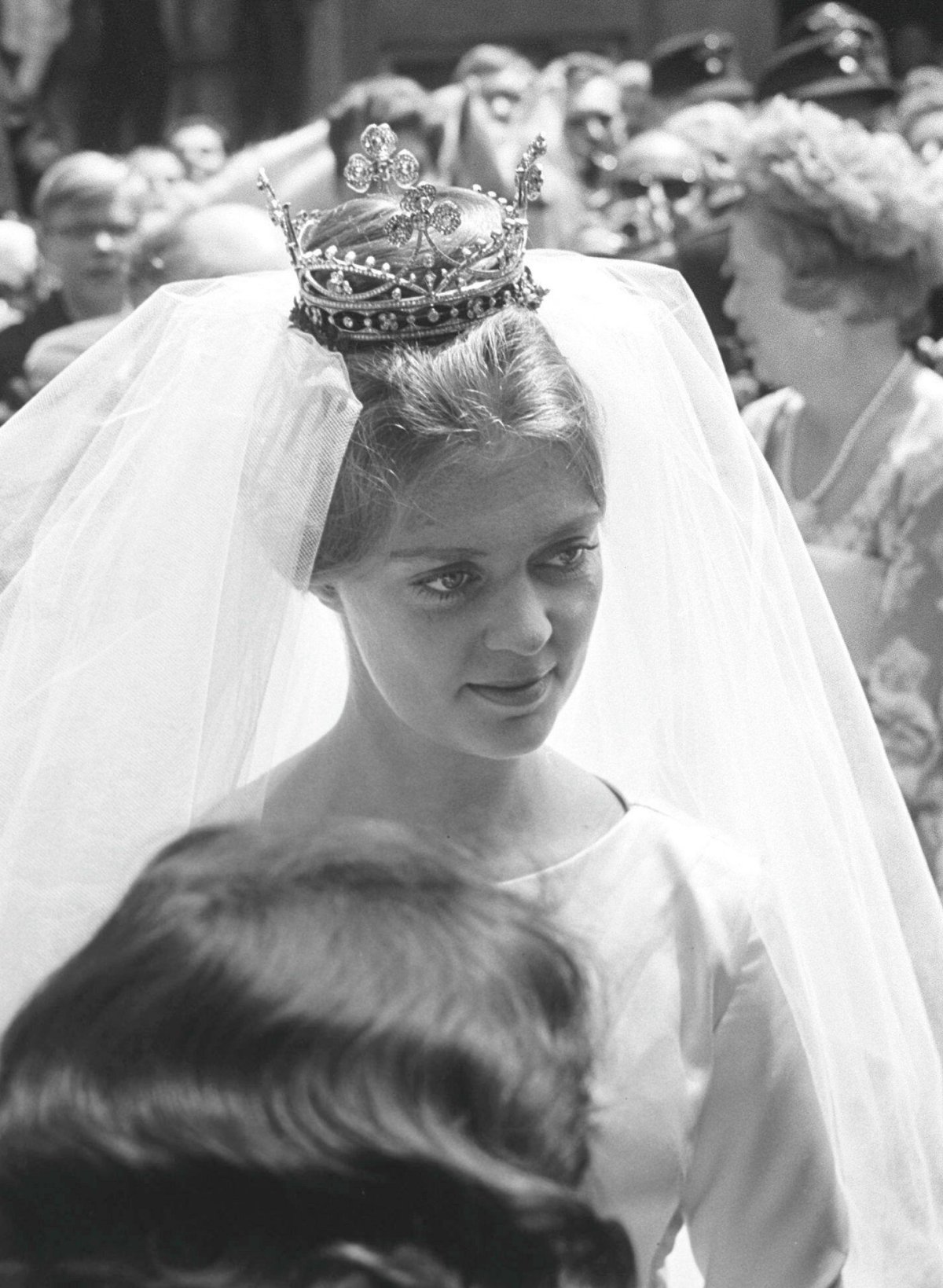
For the Catholic ceremony, Birgitta wore a different diadem with her wedding veil and gown: a diamond bridal crown from the Hohenzollern family collection, which features clover-shaped topper elements. During the ceremony, the priest cautioned the couple, noting that while the civil ceremony in Stockholm would allow the couple to part one day if their marriage didn’t succeed, the Catholic commitment was a binding one. Undeterred, the couple made their vows, exchanged rings, and drove away in another open carriage. Fifteen thousand local people were gathered to cheer them as they drove through the streets of the town. A reception at the castle followed.
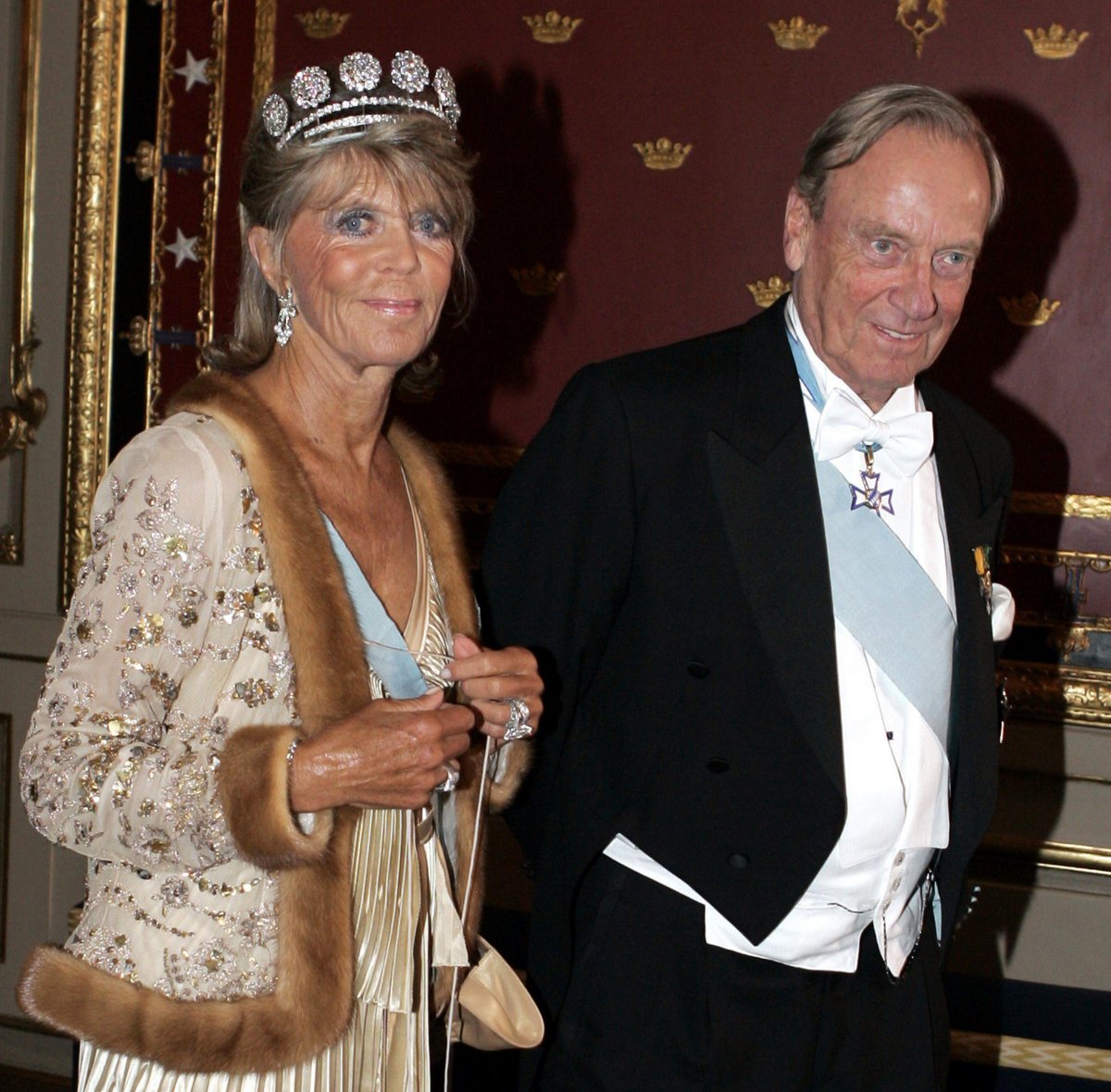
Birgitta and Hansi clearly took the priest’s words to heart. After raising their three children, Prince Carl Christian, Princess Désirée, and Prince Hubertus, they decided in 1990 to live separately, with Hansi residing in Munich and Birgitta living in a golf community in Mallorca. However, they never divorced, remaining legally married until Hansi’s death in 2016. Until then, they could sometimes still be spotted attending royal events together, including the wedding of Birgitta’s niece, Crown Princess Victoria, to Daniel Westling in 2010. The following year, the couple celebrated their 50th wedding anniversary privately in Munich with their children and grandchildren.
Leave a Reply
You must be logged in to post a comment.